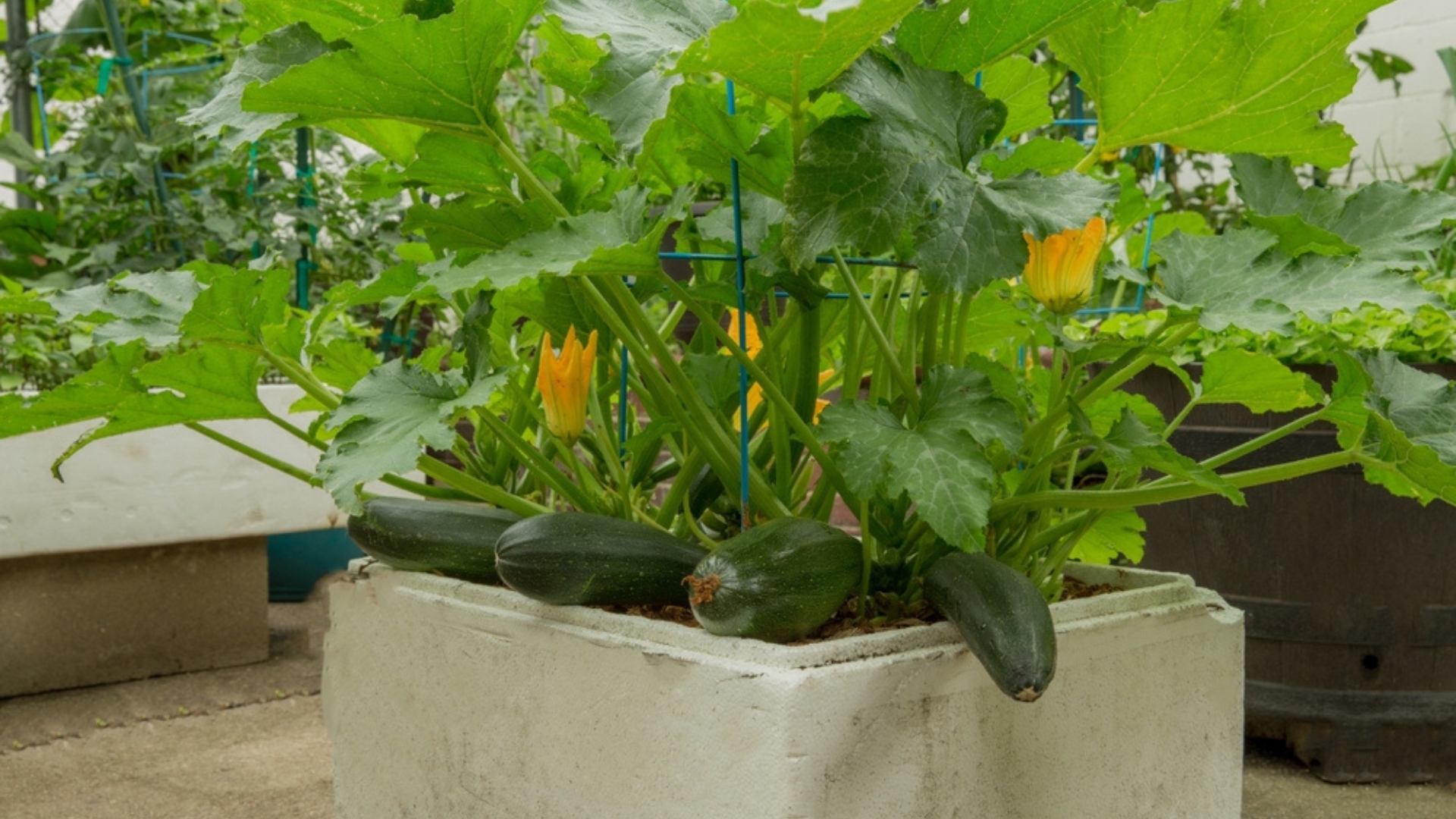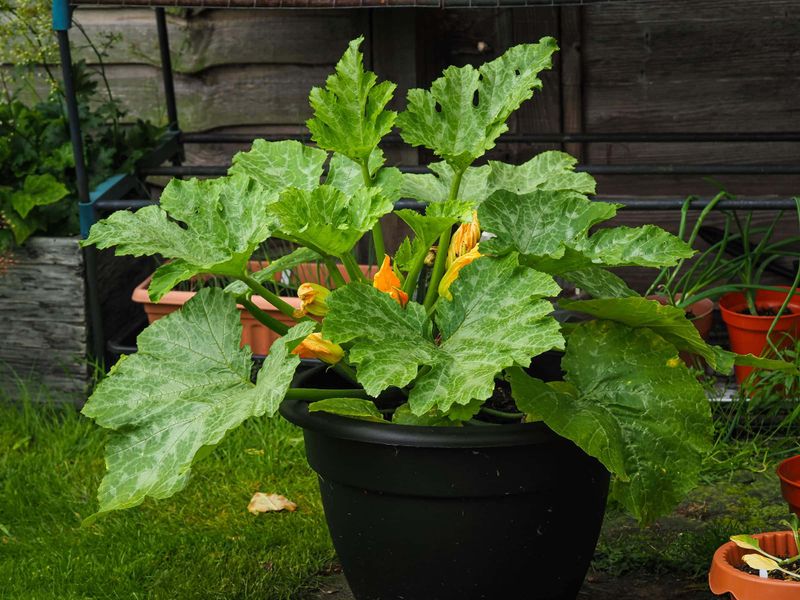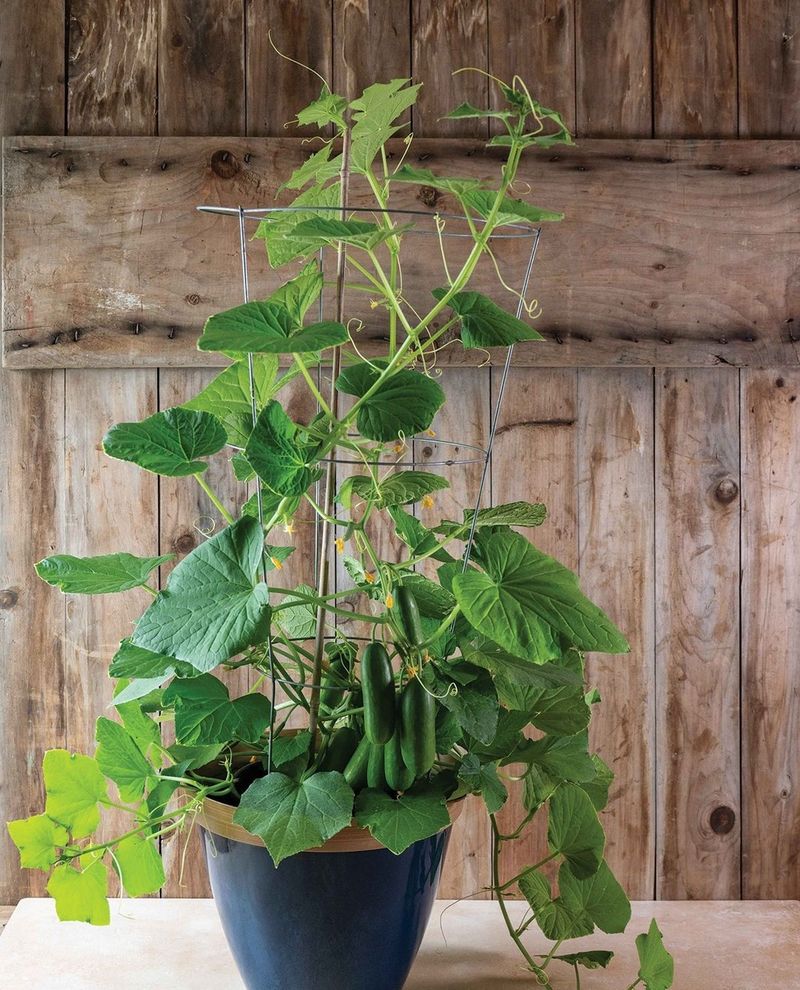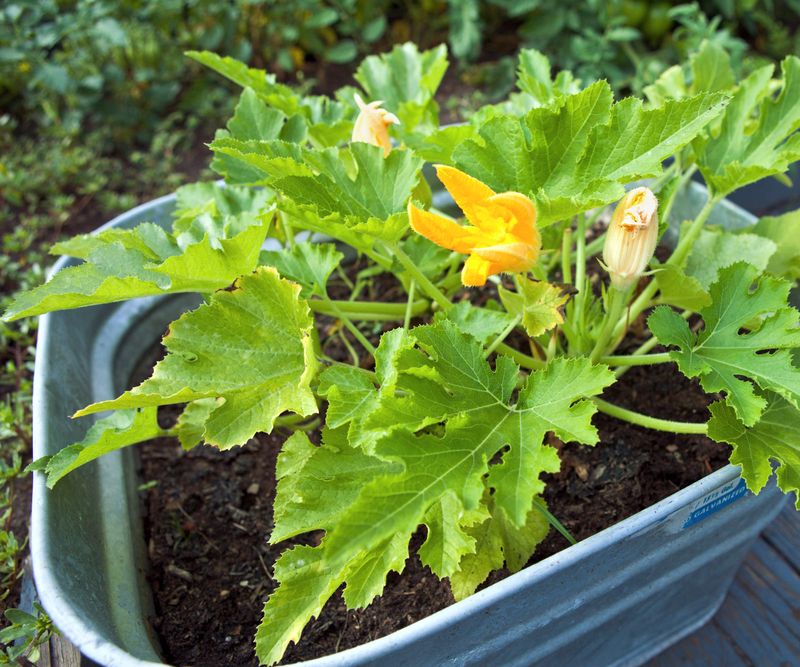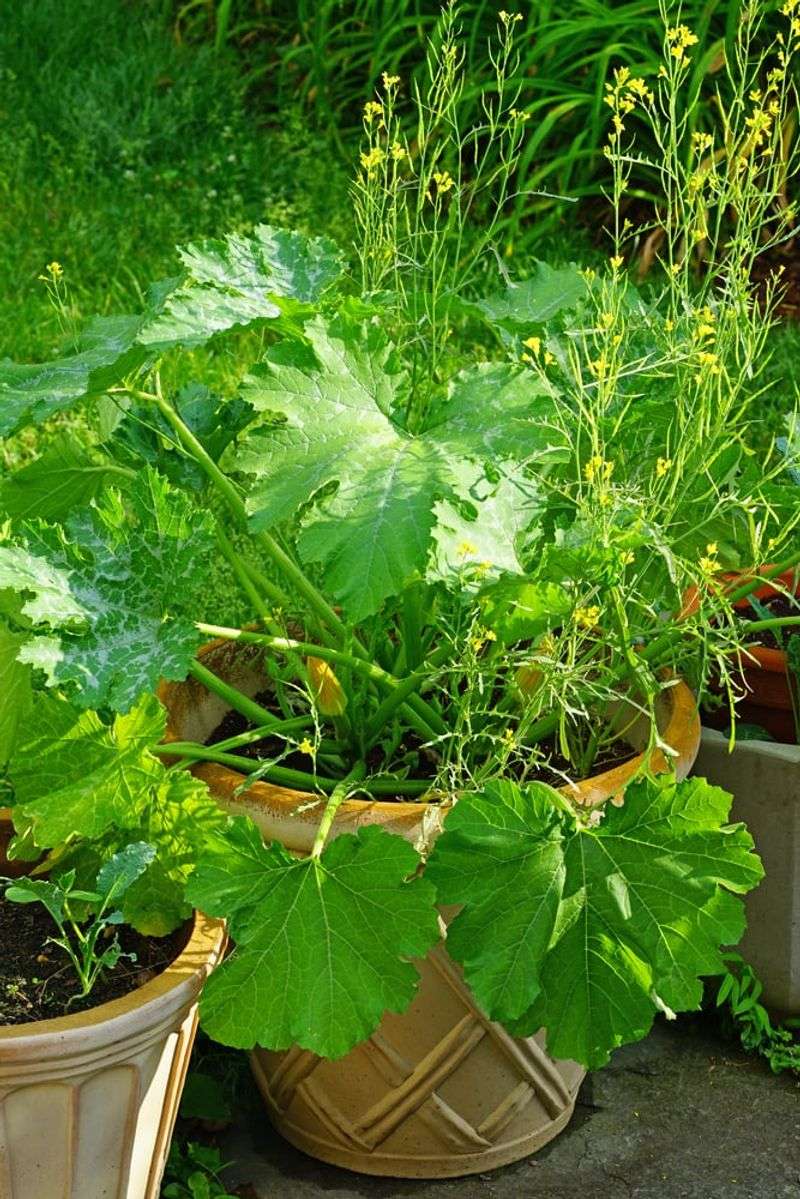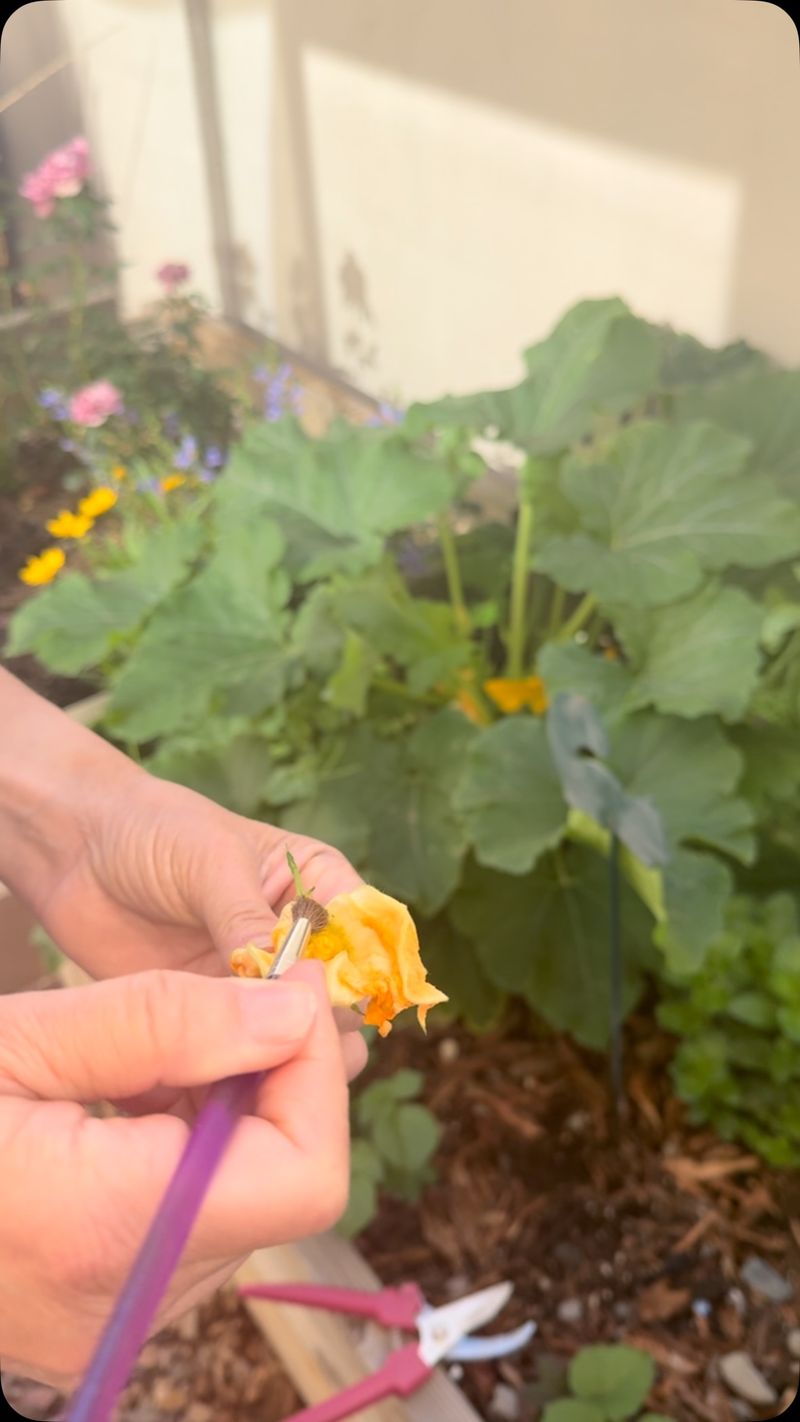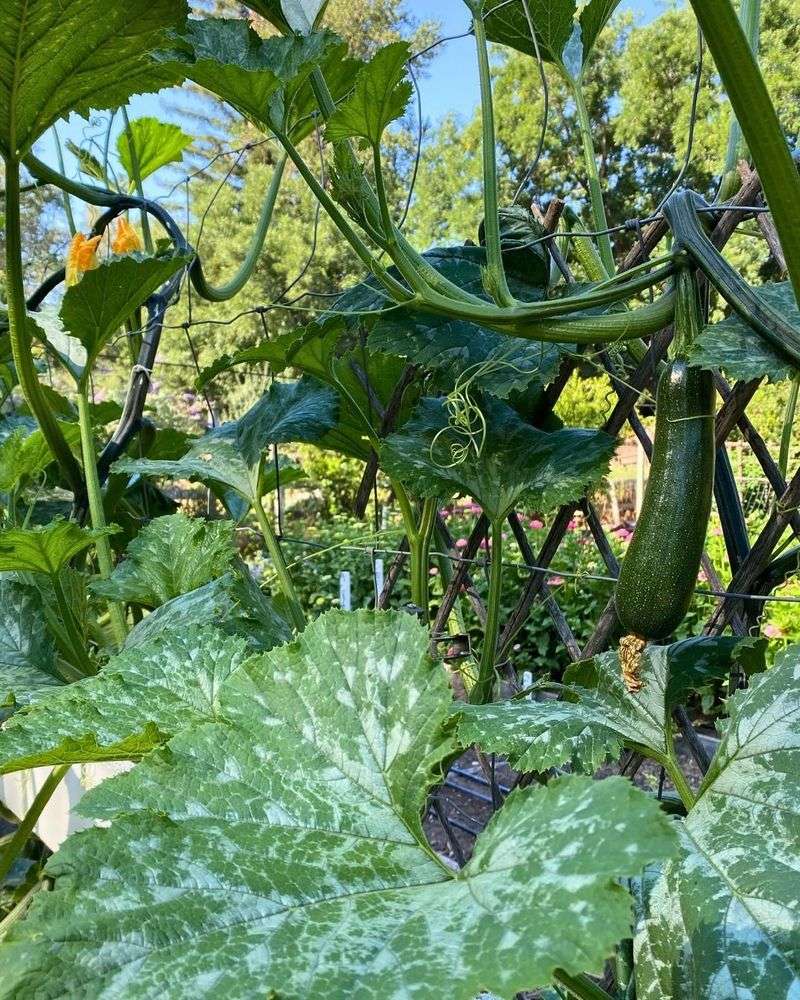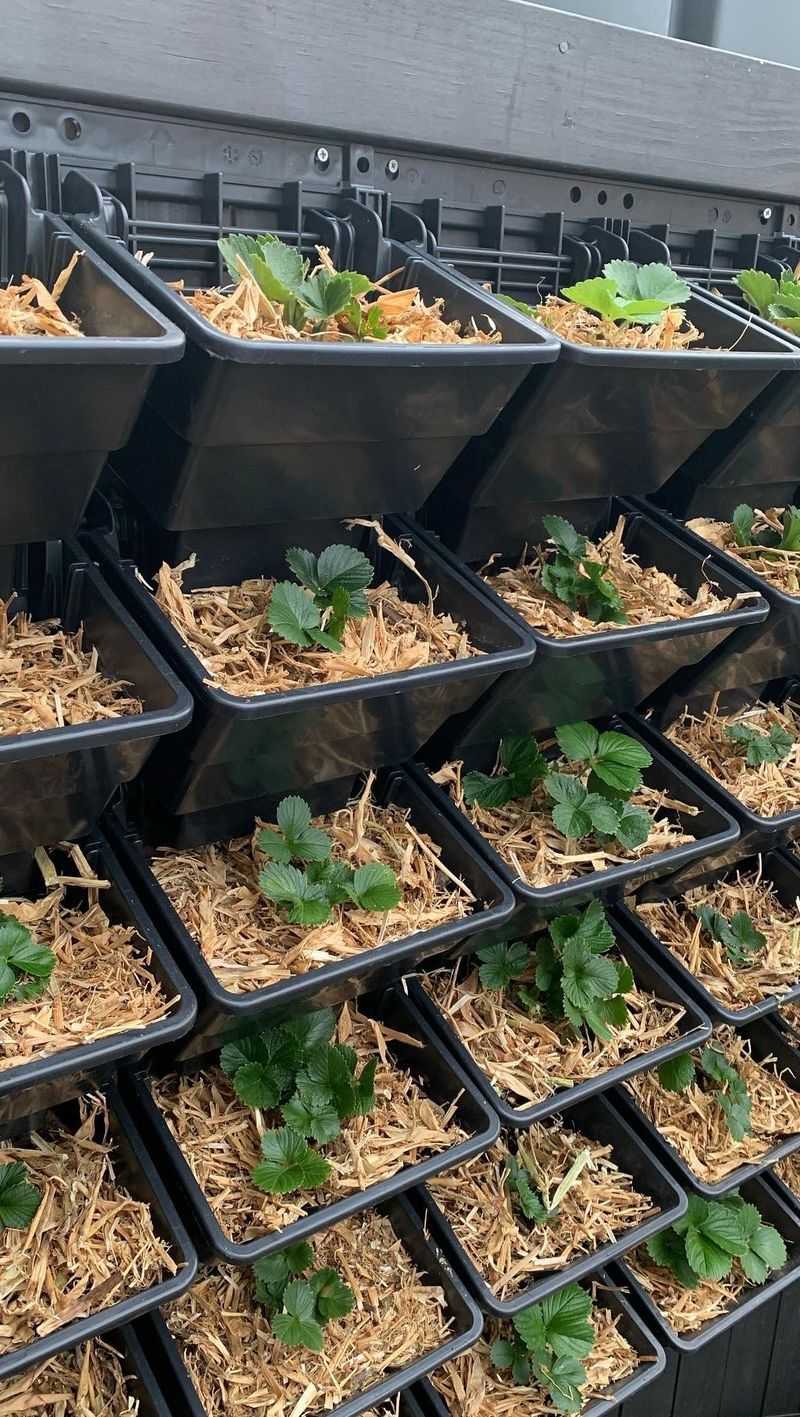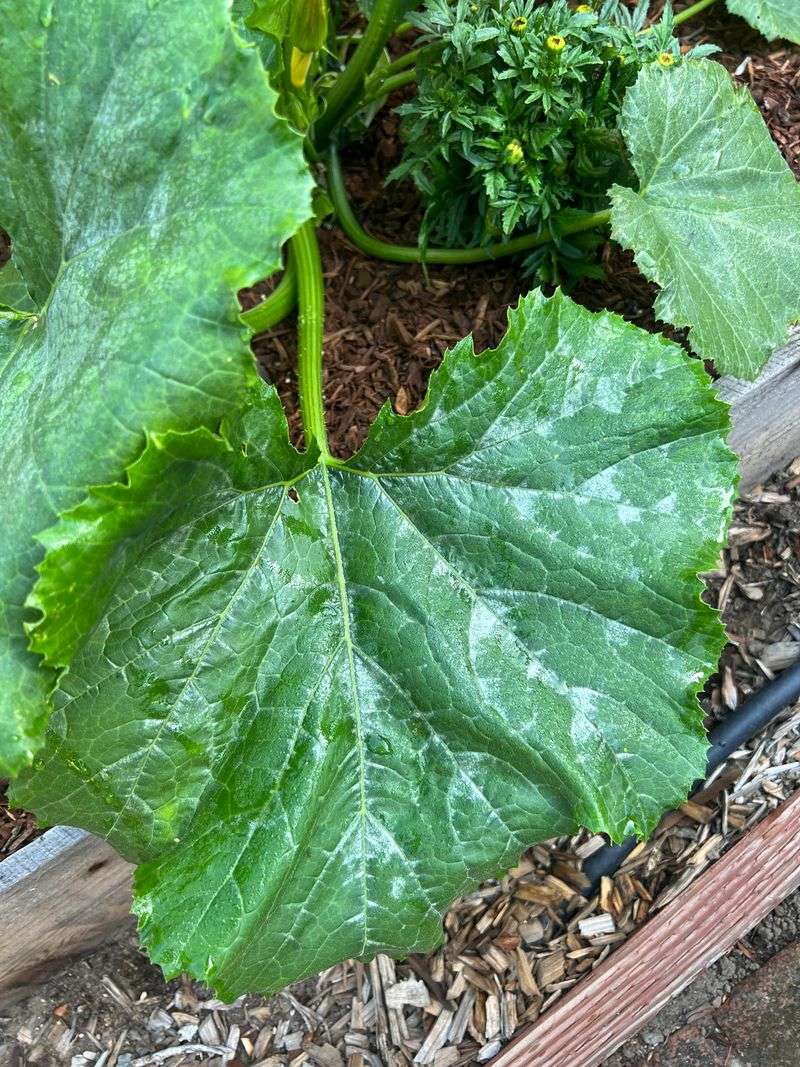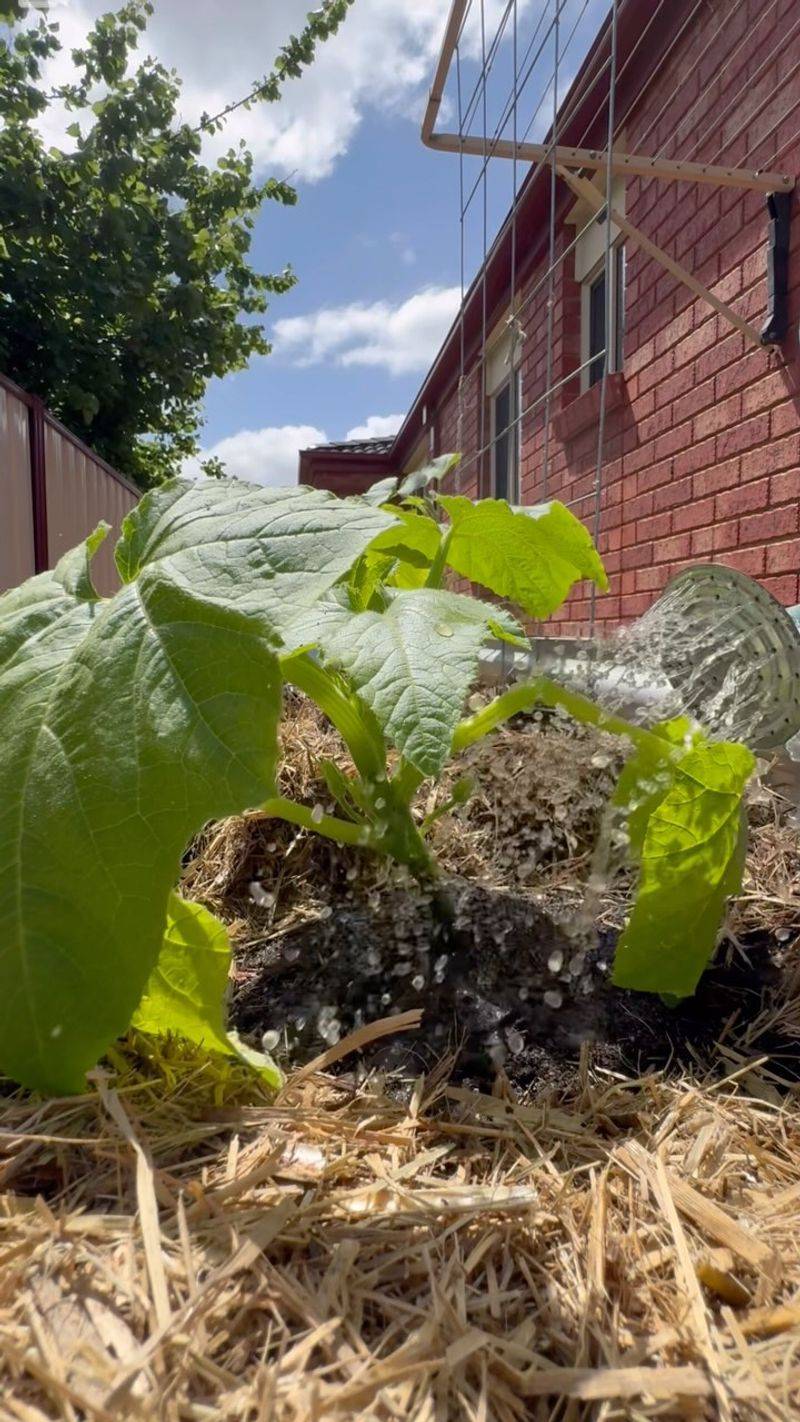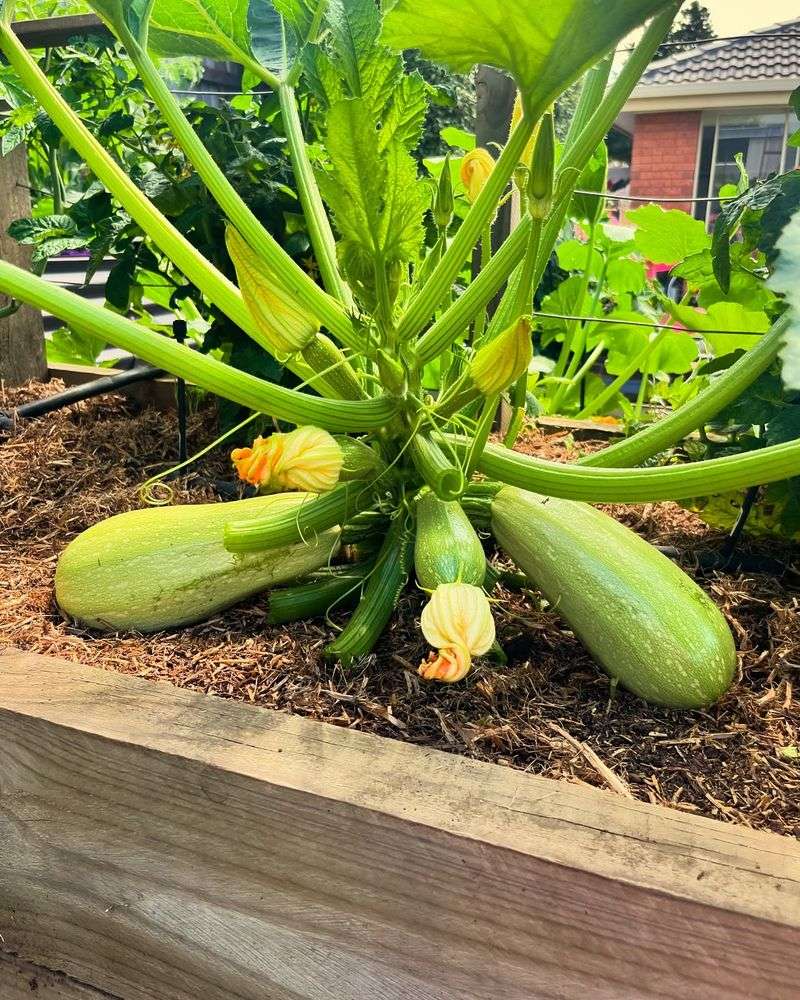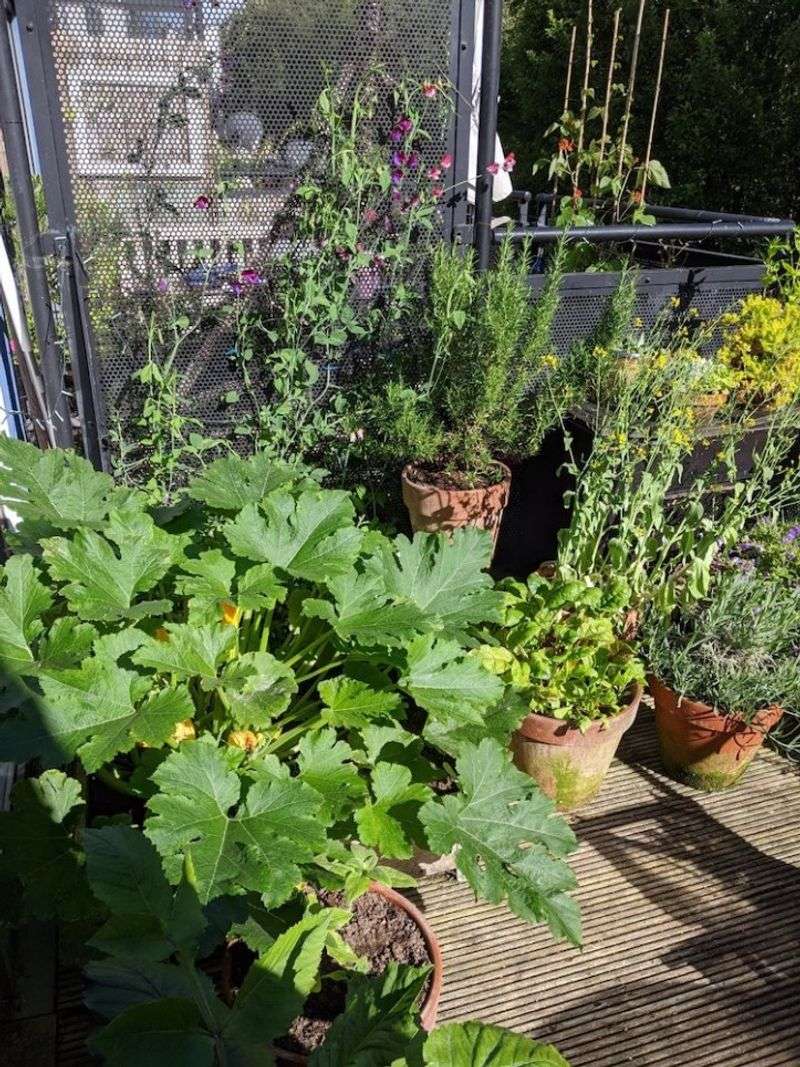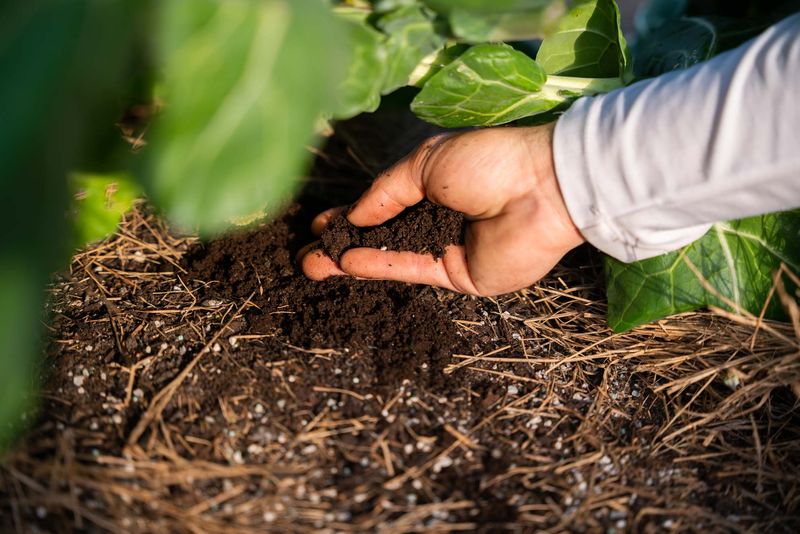Growing zucchini in containers opens up gardening possibilities for everyone, even if you only have a small patio or balcony. These versatile summer squash plants can thrive in pots when given proper care and attention. With the right techniques, you’ll enjoy a bumper crop of fresh, homegrown zucchini all season long.
1. Choose the Right Container Size
Zucchini plants need room for their roots to spread out. Pick containers at least 16-18 inches deep and 18-24 inches wide for each plant. Five-gallon buckets, half whiskey barrels, or large plastic pots work perfectly.
The extra space allows roots to develop properly, which leads to healthier plants and better harvests. Don’t try to squeeze multiple plants into one pot – zucchini gets big and needs its personal space!
2. Select Container-Friendly Varieties
Not all zucchini varieties perform equally in containers. Compact or bush varieties like ‘Bush Baby’, ‘Patio Star’, and ‘Eight Ball’ are specifically bred for small spaces and container gardening.
These varieties grow in a more compact form rather than sprawling across your patio. Their shorter vines and more concentrated growth habit make them perfect for pots while still producing plenty of delicious zucchini throughout the season.
3. Use High-Quality Potting Mix
Regular garden soil is too heavy and compacts easily in containers. Instead, use a high-quality potting mix specifically designed for containers. Look for mixes containing peat moss, perlite, and compost for ideal drainage and nutrition.
The looser texture allows roots to grow freely while retaining just enough moisture. Consider adding a handful of worm castings to boost fertility. Never use soil straight from your garden, as it can harbor diseases and pests.
4. Ensure Proper Drainage
Zucchini plants hate wet feet! Make sure your container has several drainage holes at the bottom. If needed, drill extra holes to prevent water from pooling after heavy rain or watering.
Elevate containers slightly using pot feet or small rocks to allow excess water to escape freely. A layer of small stones or broken pottery pieces at the bottom of very large containers can improve drainage while preventing soil from washing out through the holes.
5. Position for Maximum Sunlight
Zucchini plants are sun worshippers! Place your containers where they’ll receive at least 6-8 hours of direct sunlight daily. South-facing patios or balconies typically offer the most sunshine throughout the day.
If your space receives partial shade, try to ensure morning sun exposure at minimum. Morning sun helps dry dew from leaves, reducing disease problems. Remember that containers can be moved to follow the sun if needed – a major advantage over in-ground gardens!
6. Water Consistently and Deeply
Container zucchini needs more frequent watering than garden-grown plants. The soil in pots dries out faster, especially during hot summer days. Water deeply whenever the top inch of soil feels dry to the touch.
During peak summer heat, you might need to water daily. Morning watering is best, giving leaves time to dry before evening. Mulching the soil surface helps retain moisture and reduces watering frequency, saving you time and ensuring happier plants.
7. Feed Your Plants Regularly
Container plants need more frequent feeding since nutrients wash out with regular watering. Start with a slow-release organic fertilizer mixed into your potting soil. Once plants begin flowering, switch to a liquid fertilizer high in phosphorus (the middle number) to encourage fruit production.
Apply liquid fertilizer every two weeks during the growing season. Compost tea makes an excellent natural option. Watch for yellowing leaves, which often signal nutrient deficiencies that need immediate attention.
8. Hand Pollinate for Better Yields
Container zucchini sometimes struggles with pollination, especially on balconies or enclosed patios where bees may not visit regularly. Learn to identify male flowers (thin stems) and female flowers (with tiny zucchini at the base).
Use a small paintbrush to transfer pollen from male to female flowers early in the morning when blossoms are open. This simple step can dramatically increase your harvest. Each female flower that gets pollinated will develop into a delicious zucchini!
9. Provide Support for Plants
Even compact varieties benefit from some support. Insert a tomato cage or stakes when planting to avoid disturbing roots later. As plants grow, gently guide stems upward rather than letting them sprawl.
Supporting your plants improves air circulation, reducing disease problems. It also maximizes your space by encouraging vertical growth. An added bonus: supported plants are easier to harvest from, and fruits stay cleaner when they’re not resting on soil.
10. Mulch the Soil Surface
A 2-inch layer of organic mulch works wonders for container zucchini. Straw, shredded leaves, or coconut coir help maintain consistent soil moisture and temperature while suppressing weeds that compete for nutrients.
Mulch also prevents soil from splashing onto leaves during watering, reducing disease spread. As organic mulches break down, they add nutrients to your potting mix. Just keep mulch an inch away from plant stems to prevent rot problems.
11. Monitor for Pests Regularly
Container plants typically face fewer pest problems than garden plants, but stay vigilant! Check leaf undersides weekly for aphids, spider mites, and squash bugs. A strong spray of water knocks off many pests before they become established.
For persistent problems, try neem oil or insecticidal soap. Introducing beneficial insects like ladybugs can provide natural control. The good news: container growing makes it easier to spot problems early before they devastate your plants.
12. Prevent Common Diseases
Powdery mildew loves zucchini plants! Prevent it by spacing containers for good air circulation and watering at the base of plants rather than overhead. Morning watering gives leaves time to dry before evening.
A weekly spray of diluted milk (1 part milk to 9 parts water) works surprisingly well as a preventative measure. Remove any diseased leaves promptly. Using disease-resistant varieties when available gives you an extra edge against common problems.
13. Harvest Frequently and Properly
Don’t wait until zucchini grow enormous! Harvest when fruits reach 6-8 inches long for the best flavor and texture. Use a sharp knife to cut – never pull – fruits from the plant to avoid damaging stems.
Regular harvesting encourages plants to produce more flowers and fruits. Those giant zucchini might look impressive, but they’re often woody and bitter. Check plants every other day during peak season – zucchini can double in size overnight!
14. Rotate Container Positions
Zucchini plants tend to grow toward the sun, often becoming lopsided. Rotate containers a quarter turn every few days to promote even growth and prevent stems from stretching in one direction.
This simple habit ensures all parts of the plant receive adequate sunlight. Balanced growth leads to stronger stems and better fruit production. As an added bonus, rotating gives you a chance to spot any developing problems on all sides of your plants.
15. Provide Wind Protection
Container plants are more vulnerable to wind damage than garden plants. If your balcony or patio gets gusty, position containers where they receive some protection from walls or other structures.
For particularly windy locations, consider temporary windbreaks like lattice screens. Strong winds can damage leaves, break stems, and dry out soil quickly. Plants stressed by wind are also more susceptible to pests and diseases, so this protection pays off in healthier plants.
16. Refresh Soil Mid-Season
By mid-summer, your zucchini plants have used up many nutrients in the container. Give them a boost by carefully removing the top inch of soil without disturbing roots, then replacing it with fresh compost.
This “top dressing” technique provides new nutrients just when plants need them most for continued production. The organic matter in compost releases nutrients slowly, feeding plants over time rather than all at once like chemical fertilizers.

